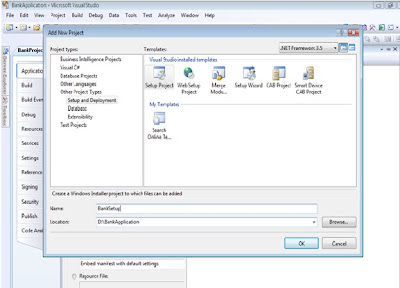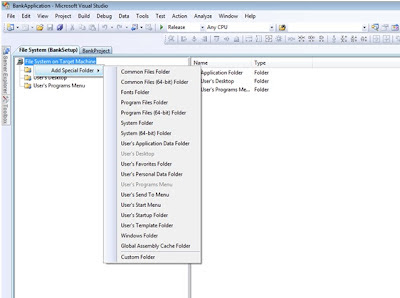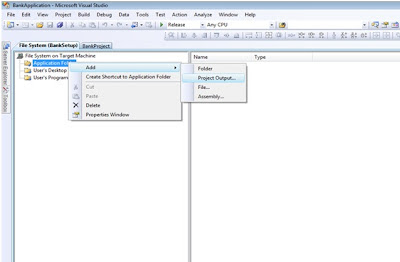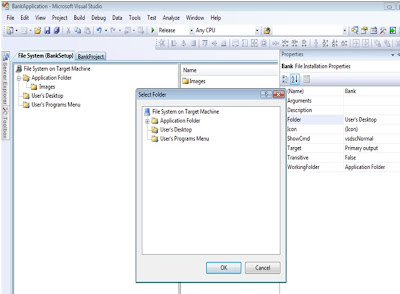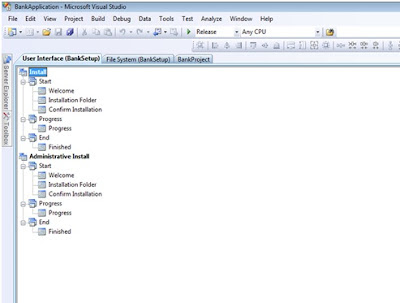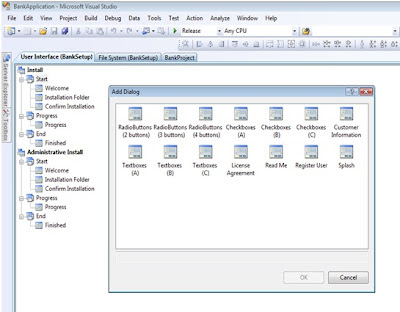Day5- Console application Programs
listing 1
// A program that uses the Building class.
using System;
class Building {
public int floors; // number of floors
public int area; // total square footage of building
public int occupants; // number of occupants
}
// This class declares an object of type Building.
class BuildingDemo {
public static void Main() {
Building house = new Building(); // create a Building object
int areaPP; // area per person
// assign values to fields in house
house.occupants = 4;
house.area = 2500;
house.floors = 2;
// compute the area per person
areaPP = house.area / house.occupants;
Console.WriteLine("house has:\n " +
house.floors + " floors\n " +
house.occupants + " occupants\n " +
house.area + " total area\n " +
areaPP + " area per person");
}
}
listing 2
// This program creates two Building objects.
using System;
class Building {
public int floors; // number of floors
public int area; // total square footage of building
public int occupants; // number of occupants
}
// This class declares two objects of type Building.
class BuildingDemo {
public static void Main() {
Building house = new Building();
Building office = new Building();
int areaPP; // area per person
// assign values to fields in house
house.occupants = 4;
house.area = 2500;
house.floors = 2;
// assign values to fields in office
office.occupants = 25;
office.area = 4200;
office.floors = 3;
// compute the area per person in house
areaPP = house.area / house.occupants;
Console.WriteLine("house has:\n " +
house.floors + " floors\n " +
house.occupants + " occupants\n " +
house.area + " total area\n " +
areaPP + " area per person");
Console.WriteLine();
// compute the area per person in office
areaPP = office.area / office.occupants;
Console.WriteLine("office has:\n " +
office.floors + " floors\n " +
office.occupants + " occupants\n " +
office.area + " total area\n " +
areaPP + " area per person");
}
}
listing 3
// Add a method to Building.
using System;
class Building {
public int floors; // number of floors
public int area; // total square footage of building
public int occupants; // number of occupants
// Display the area per person.
public void areaPerPerson() {
Console.WriteLine(" " + area / occupants +
" area per person");
}
}
// Use the areaPerPerson() method.
class BuildingDemo {
public static void Main() {
Building house = new Building();
Building office = new Building();
// assign values to fields in house
house.occupants = 4;
house.area = 2500;
house.floors = 2;
// assign values to fields in office
office.occupants = 25;
office.area = 4200;
office.floors = 3;
Console.WriteLine("house has:\n " +
house.floors + " floors\n " +
house.occupants + " occupants\n " +
house.area + " total area");
house.areaPerPerson();
Console.WriteLine();
Console.WriteLine("office has:\n " +
office.floors + " floors\n " +
office.occupants + " occupants\n " +
office.area + " total area");
office.areaPerPerson();
}
}
listing 4
public void myMeth() {
int i;
for(i=0; i<10; i++) {
if(i == 5) return; // stop at 5
Console.WriteLine();
}
}
listing 5
// Return a value from areaPerPerson().
using System;
class Building {
public int floors; // number of floors
public int area; // total square footage of building
public int occupants; // number of occupants
// Display the area per person.
public int areaPerPerson() {
return area / occupants;
}
}
// Use the return value from areaPerPerson().
class BuildingDemo {
public static void Main() {
Building house = new Building();
Building office = new Building();
int areaPP; // area per person
// assign values to fields in house
house.occupants = 4;
house.area = 2500;
house.floors = 2;
// assign values to fields in office
office.occupants = 25;
office.area = 4200;
office.floors = 3;
// obtain area per person for house
areaPP = house.areaPerPerson();
Console.WriteLine("house has:\n " +
house.floors + " floors\n " +
house.occupants + " occupants\n " +
house.area + " total area\n " +
areaPP + " area per person");
Console.WriteLine();
// obtain area per person for office
areaPP = office.areaPerPerson();
Console.WriteLine("office has:\n " +
office.floors + " floors\n " +
office.occupants + " occupants\n " +
office.area + " total area\n " +
areaPP + " area per person");
}
}
listing 6
// A simple example that uses a parameter.
using System;
class ChkNum {
// Return true if x is prime.
public bool isPrime(int x) {
for(int i=2; i < x/2 + 1; i++)
if((x %i) == 0) return false;
return true;
}
}
class ParmDemo {
public static void Main() {
ChkNum ob = new ChkNum();
for(int i=1; i < 10; i++)
if(ob.isPrime(i)) Console.WriteLine(i + " is prime.");
else Console.WriteLine(i + " is not prime.");
}
}
listing 7
// Add a method that takes two arguments.
using System;
class ChkNum {
// Return true if x is prime.
public bool isPrime(int x) {
for(int i=2; i < x/2 + 1; i++)
if((x %i) == 0) return false;
return true;
}
// Return the least common denominator.
public int lcd(int a, int b) {
int max;
if(isPrime(a) | isPrime(b)) return 1;
max = a < b ? a : b;
for(int i=2; i < max/2 + 1; i++)
if(((a%i) == 0) & ((b%i) == 0)) return i;
return 1;
}
}
class ParmDemo {
public static void Main() {
ChkNum ob = new ChkNum();
int a, b;
for(int i=1; i < 10; i++)
if(ob.isPrime(i)) Console.WriteLine(i + " is prime.");
else Console.WriteLine(i + " is not prime.");
a = 7;
b = 8;
Console.WriteLine("Least common denominator for " +
a + " and " + b + " is " +
ob.lcd(a, b));
a = 100;
b = 8;
Console.WriteLine("Least common denominator for " +
a + " and " + b + " is " +
ob.lcd(a, b));
a = 100;
b = 75;
Console.WriteLine("Least common denominator for " +
a + " and " + b + " is " +
ob.lcd(a, b));
}
}
listing 8
/*
Add a parameterized method that computes the
maximum number of people that can occupy a
buiding assuming each needs a specified
minimum space.
*/
using System;
class Building {
public int floors; // number of floors
public int area; // total square footage of building
public int occupants; // number of occupants
// Display the area per person.
public int areaPerPerson() {
return area / occupants;
}
/* Return the maximum number of occupants if each
is to have at least the specified minimum area. */
public int maxOccupant(int minArea) {
return area / minArea;
}
}
// Use maxOccupant().
class BuildingDemo {
public static void Main() {
Building house = new Building();
Building office = new Building();
// assign values to fields in house
house.occupants = 4;
house.area = 2500;
house.floors = 2;
// assign values to fields in office
office.occupants = 25;
office.area = 4200;
office.floors = 3;
Console.WriteLine("Maximum occupants for house if each has " +
300 + " square feet: " +
house.maxOccupant(300));
Console.WriteLine("Maximum occupants for office if each has " +
300 + " square feet: " +
office.maxOccupant(300));
}
}
listing 9
// A simple constructor.
using System;
class MyClass {
public int x;
public MyClass() {
x = 10;
}
}
class ConsDemo {
public static void Main() {
MyClass t1 = new MyClass();
MyClass t2 = new MyClass();
Console.WriteLine(t1.x + " " + t2.x);
}
}
listing 10
// A parameterized constructor.
using System;
class MyClass {
public int x;
public MyClass(int i) {
x = i;
}
}
class ParmConsDemo {
public static void Main() {
MyClass t1 = new MyClass(10);
MyClass t2 = new MyClass(88);
Console.WriteLine(t1.x + " " + t2.x);
}
}
listing 11
// Add a constructor to Building.
using System;
class Building {
public int floors; // number of floors
public int area; // total square footage of building
public int occupants; // number of occupants
public Building(int f, int a, int o) {
floors = f;
area = a;
occupants = o;
}
// Display the area per person.
public int areaPerPerson() {
return area / occupants;
}
/* Return the maximum number of occupants if each
is to have at least the specified minum area. */
public int maxOccupant(int minArea) {
return area / minArea;
}
}
// Use the parameterized Building constructor.
class BuildingDemo {
public static void Main() {
Building house = new Building(2, 2500, 4);
Building office = new Building(3, 4200, 25);
Console.WriteLine("Maximum occupants for house if each has " +
300 + " square feet: " +
house.maxOccupant(300));
Console.WriteLine("Maximum occupants for office if each has " +
300 + " square feet: " +
office.maxOccupant(300));
}
}
listing 12
// Use new with a value type.
using System;
class newValue {
public static void Main() {
int i = new int(); // initialize i to zero
Console.WriteLine("The value of i is: " + i);
}
}
listing 13
// Demonstrate a destructor.
using System;
class Destruct {
public int x;
public Destruct(int i) {
x = i;
}
// called when object is recycled
~Destruct() {
Console.WriteLine("Destructing " + x);
}
// generates an object that is immediately destroyed
public void generator(int i) {
Destruct o = new Destruct(i);
}
}
class DestructDemo {
public static void Main() {
int count;
Destruct ob = new Destruct(0);
/* Now, generate a large number of objects. At
some point, garbage collection will occur.
Note: you might need to increase the number
of objects generated in order to force
garbage collection. */
for(count=1; count < 100000; count++)
ob.generator(count);
Console.WriteLine("Done");
}
}
listing 14
using System;
class Rect {
public int width;
public int height;
public Rect(int w, int h) {
width = w;
height = h;
}
public int area() {
return width * height;
}
}
class UseRect {
public static void Main() {
Rect r1 = new Rect(4, 5);
Rect r2 = new Rect(7, 9);
Console.WriteLine("Area of r1: " + r1.area());
Console.WriteLine("Area of r2: " + r2.area());
}
}
listing 15
using System;
class Rect {
public int width;
public int height;
public Rect(int w, int h) {
this.width = w;
this.height = h;
}
public int area() {
return this.width * this.height;
}
}
class UseRect {
public static void Main() {
Rect r1 = new Rect(4, 5);
Rect r2 = new Rect(7, 9);
Console.WriteLine("Area of r1: " + r1.area());
Console.WriteLine("Area of r2: " + r2.area());
}
}
listing 16
public Rect(int width, int height) {
this.width = width;
this.height = height;
}
